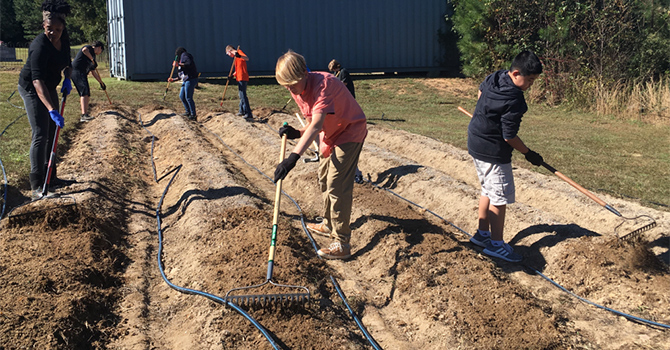The young pastor said he felt like a failure.
He wasn’t the first rural pastor I’ve heard say this. The center that I direct, located at a small United Methodist college, is focused on working with rural congregations to support community and economic development. Before this, I pastored a small rural congregation. I’ve been in his shoes, and I know other pastors who have been in his shoes, too.
“I always believed that if I did all the right things, if I got all the parts of ministry right, then my church would grow,” he said. “But it’s not happening. I feel like a failure.”
He described his community: a rural county with a high level of opiate use, significant poverty and inadequate health care. He spoke with pride about the ministries of his church -- in particular, their community meals, where judges eat with the criminals they have sentenced. He knew the ins and outs of his community, both the stories and the data. And yet, he told us, his church continued to shrink.
This story is not uncommon. Pastors are often led to believe that success in their congregations is contingent upon increasing worship attendance. Missions and evangelism become tools by which to reach this growth rather than efforts by which to recognize and participate in the restless change that God is creating.
In many small-church contexts, numerical growth is next to impossible. But that doesn’t mean that the pastors or the congregations are failures. I’ve heard many stories of small ministries that are succeeding -- measured not by the numbers but by the impact of their work.
The Rev. Meghan Killingsworth and the Rev. Glenn Stallsmith, for example, reject the notion that thriving churches are exclusively those that are rapidly attracting members -- and that small churches are simply places to serve as chaplains for idle, unproductive congregations.
Instead, these pastors remind us of the hard work required of leaders in our small-membership congregations. Small congregations are not doomed to irrelevancy, but neither are they likely to greatly increase their average worship attendance.
Meghan is co-pastor of First United Methodist Church in Sanford, Florida, a small city outside Orlando. Over the last few years, the city has grown rapidly, boosted by its increasingly busy airport and its proximity to Disney World. The church sits on a brick-paved street across from a park, a few blocks from a popular lake. One of several churches on the street, First United Methodist has worshipped in its current structure since 1915, in a sanctuary that features nearly 40 stained-glass windows.
The congregation is small, averaging about 80 on a typical Sunday, and it seems destined to remain so. For the members to match the type of worship that popular mega-churches in the area offer, they would have to change their DNA as a congregation. Expanding or building a new campus is not a possibility without abandoning the church’s physical place in the community.
Instead, Meghan has begun a conversation, both within her church and with fellow pastors in the area, about what she calls “missional metrics.” Her questions are about assets that her church can offer to the changing community: What are the needs we can meet? How might we be incarnational within our community? What does it mean to be a leader in this particular community? Where do we fit in the current ecosystem?
For Sanford First United Methodist Church, that means better utilization of their building. Using the fellowship halls and classrooms that otherwise sit empty, the congregation is launching a co-working and incubator space for nonprofits in the community.
When the co-working space is fully operational, it will bring together complementary nonprofits. Already, food-based programs, support groups and entrepreneurial initiatives focused on justice have signed on. Groups that share this space will share a commitment to partnering with each other through quarterly learning opportunities and an annual volunteer fair for the wider community.
“All of these groups were trying to find ways to work together,” Meghan said. “We want to find ways for our church to help in that.”
Glenn, too, had to come up with a creative way to help his congregation reach its community. Glenn is a part-time pastor at Salem United Methodist Church in rural Oxford, North Carolina, which averages about 20 in weekly worship. Located outside of the small town, the church is mostly surrounded by fields and trees.
Over the last few years, the rural congregation has worked to create a small community garden. While the people in the pews are not farmers, many of them came from farming families, and small farms still dominate the landscape. A community garden was, as Glenn told me, “in the DNA of the congregation.” And it was a way to connect with the students at the school a few miles away, who were looking for opportunities to fulfill their community service hours.
For Glenn, the garden is a way for the church to enter into a new aspect of ministry. “I can preach every Sunday about how we need to be more evangelistic or outward-facing or missional, and it can be overwhelming. This is something we can do in that direction.”
The garden will likely never yield much in the way of new members, because the population around the church is not growing. Instead, Glenn sees the garden as a way to change the perception of the role of the church in the community, both for its members and for those outside the church.
“I hope that this helps to change the texture of the community,” he said.
Both Meghan and Glenn acknowledge that their churches will never see profound membership growth from these ministries. Instead, they offer a template for a revitalized life and vision for small-membership congregations, and a new way of evaluating failure and success.
These are congregations leading substantial change by building on their assets, including their small size. Even if they don’t grow, they aren’t failures; they can still lead purposeful ministry.






